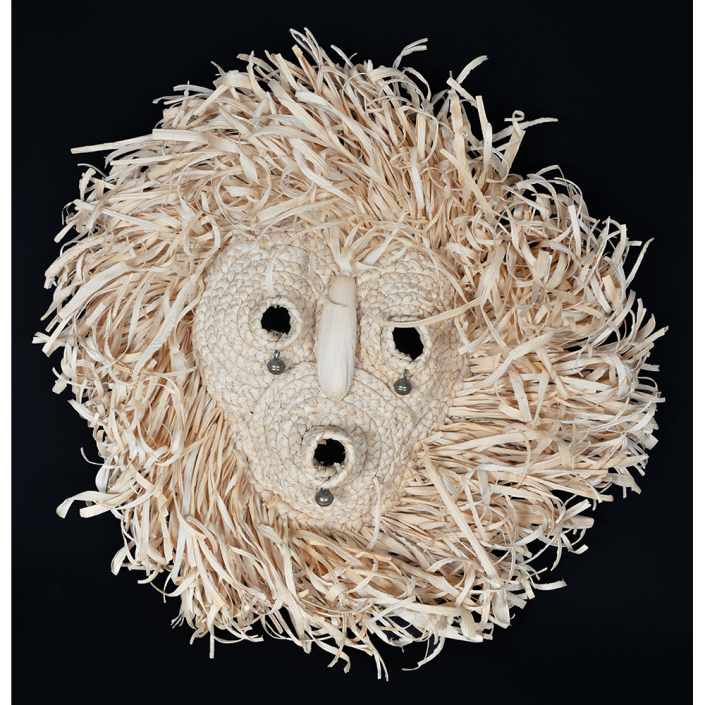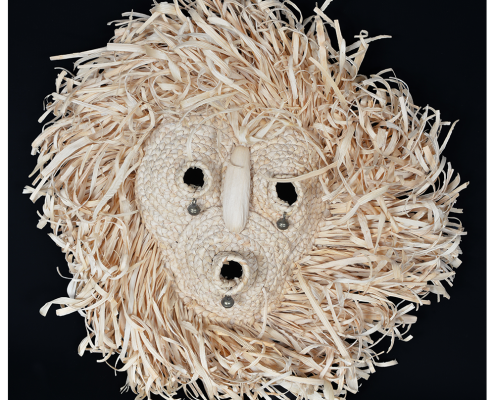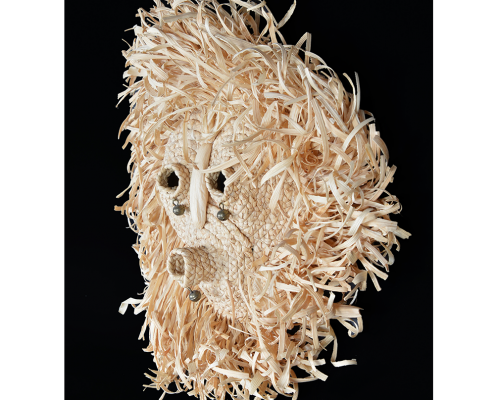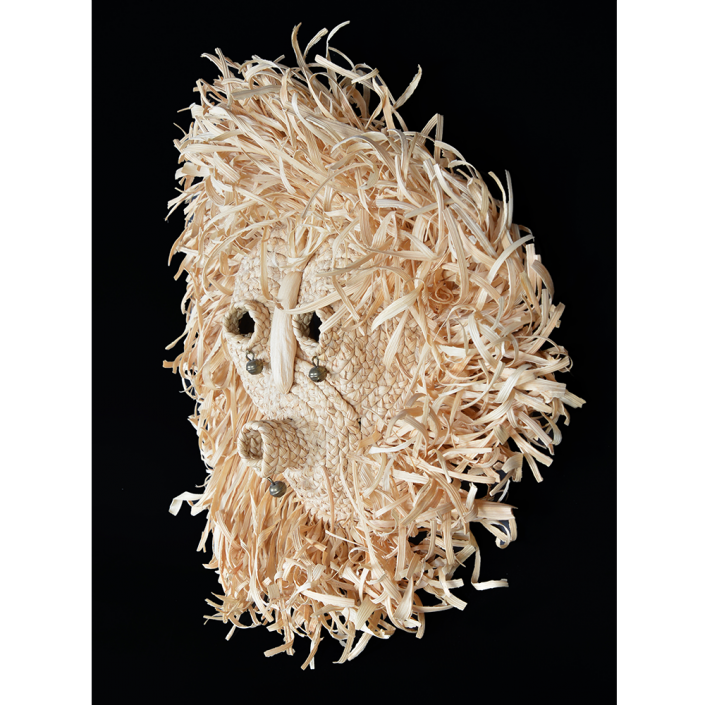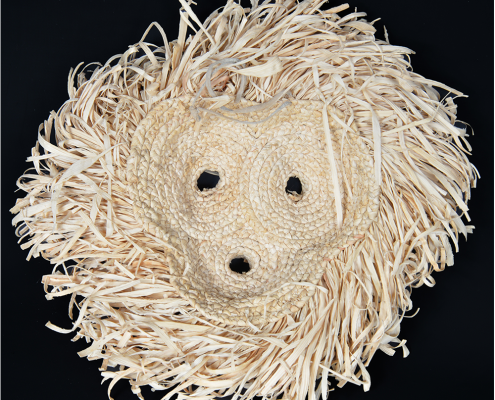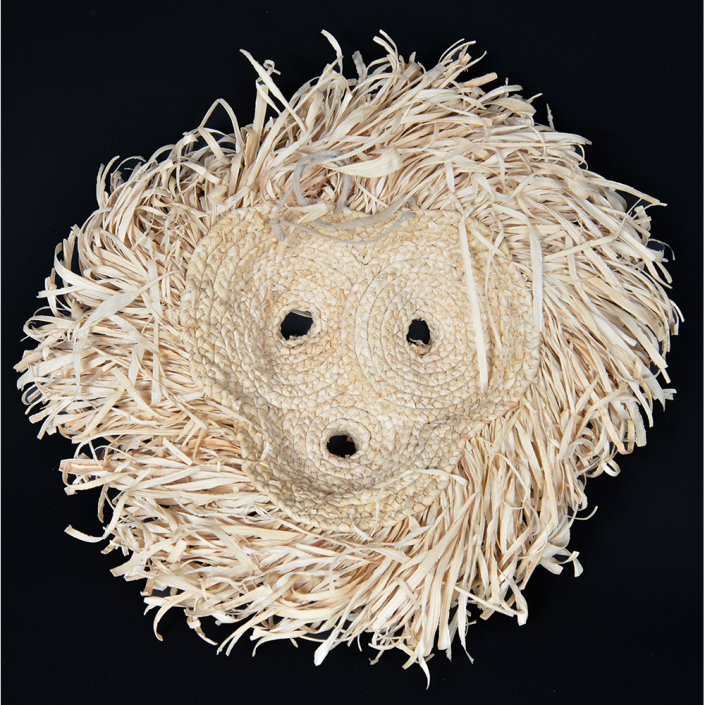TITLE: Iroquois Corn Husk Mask
TYPE: face mask
GENERAL REGION: North American
COUNTRY: Canada
SUBREGION: Québec
ETHNICITY: Iroquois (Mohawk)
DESCRIPTION: Corn Husk (Bushy Head) Mask
CATALOG ID: NACA007
MAKER: Unknown
CEREMONY: Agriculture; Healing; Secret Society; Spirit Invocation
AGE: 1960s
MAIN MATERIAL: braided corn husks
OTHER MATERIALS: brass bells
The Mohawk people (Kanien’kehá-ka) belong to the Iroquois League (Haudenosaunee) and historically inhabited western New York state, as well as parts of Quebec and Ontario, before being displaced by Dutch and British settlers. They maintain tribal lands in Ontario and Quebec today, reserved by treaty.
Most Iroquois nations, including the Mohawk, had three medicine societies, one of which was the Society of Husk Faces. Among the important rituals of the Society are celebration of the Midwinter Festival using the “Bushy Heads” or corn husk masks. They represent earthbound spirits from the other side of the world, where the seasons are reversed (which, in fact, they are south of the Equator). The beings taught the Iroquois the skills of hunting and agriculture. They perform predominantly two dances, known as the Fish Dance and the Women’s Dance. Unlike the False Face dancers, Husk Face dancers are mute. Like the False Face dancers, they can cure the ill by blowing hot ash or sprinkling water on their patients.
The Bushy Heads can be male or female, young or old. Either men or women may dance in the Husk Face Society, and sometimes they choose masks of the opposite gender to the amusement of the audience. This specific mask adds brass bells to symbolize the tears and runny nose of an old woman spirit.
For more on Iroquois masking traditions, see William N. Fenton, The False Faces of the Iroquois (University of Oklahoma Press, 1987).
